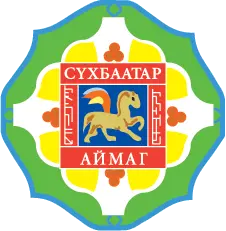
About us
News
See all
About Us
Before 1921, the territory of Sukhbaatar Province was the territory of 6 provinces of Khalkhyn Setsen Khan Province: Chin Van Province, Dalai Van Province, Yost Beis Province, Erkh Gun Province, Hurts Gav Province, and Yeguzer Khutagt Shavi Province. In 1931, when the 4 provinces of Khalkh were changed to 13 provinces, Khentii and Dornod provinces belonged to them. In 1942, the administrative change of 1940-1942 saw the establishment of a new Javkhlant Sharga province. At this time, 10 sums from Dornod province, such as Asgat, Bayandelger, Darganga, Darkhankhaan, Javkhlant sharga, Zotol, Tovc tanizulga, Ongon, Urt, Khalzan, and Hongor, and 4 sums from Khentii province, Bayanterem, Uulbayan, Ulziit, Tuvshinshiree, all 14 sums, 125 teams, 29, It was established with a population of 2,000, 850,000 head of livestock, 2 horse stations for mowing grass, 1 coal mine, and 3 milk and oil factories. It was centered in the settlement of Mandal Monastery. The conference elected 29 members and 9 heads of provincial ministries and appointed Sededin Tuvden as the provincial head. According to the resolution of the state conference dated February 20, 1943, Javakhlant Sharga Province was renamed "Sukhbaatar province" after the great general Sukhbaatar. In the same year, the center of the province was relocated near the Baruun-Urt river and named "Baruun-Urt". The province has 13 administrative districts, 66 districts, and a population of about 60,000. The majority of the population are Khalkh and Darganga ethnic groups, while Uzemchin, Barga, Huuchid, Ould and Tsachar ethnic groups make up the minority.
The total length of the country is 1340 km, and it borders with the People's Republic of China for 485 km in the south, Dornogovi Province for 165 km in the west, Khentii Province for 260 km for the north, and Dornod Province for 430 km in the northeast.
The territory of the province is the continuation of the southern part of the Eastern Mongolian Plain, and it has a total area of 82.3 thousand km 2 and is included in the steppe zone. Most of the area is 1000-1200m above sea level. The highest point is Mount Shiliin Bogd, which is 1778m above sea level, and the lowest point is Baishint, which is 790m above sea level.
Sukhbaatar province is included in the hydrological region of low water area, with scarce surface water and no rivers with constant flow, but there are more than 20 small lakes, 200 springs and streams. Talbulag, Aryn Lake, Rashaant, Ereen Tolgoi, Dalai Bulag, Gashuun, Tsavchir Knee, Modongi Hudag, and Tsagaan Bulag are many springs. There are many places with strange natural formations. These include: more than 200 extinct volcanoes in Darganga Sum, Ongon in Darganga Sum with an area of 127-248 km2, Ongon and Moltso Great Sands in the area of Erdenetsagaan Sum, Lkhachinvandad Mountain in Erdenetsagaan Sum, Bayandulaan in Darganga and Naran Sum, Bayandulaan in Darganga and Naran Sum, Bayan-Uul in Munkhhaan Sum. cave. There are many ridges and valleys with large stone formations such as Log, Budar, Zaara, Torongi, Delgerkhaan, and Hargiltai, and the remains of animals and plants such as fossils can be found in the areas of Baishint, Gaddovi Gobi, and Khorgoljin.
Contact Us
70518568
SUB ORGANIZATIONS
RELATED ORGANIZATIONS
ТӨРИЙН ҮЙЛЧИЛГЭЭ
Subscribe
If you want to receive new updates regularly without delay, please enter your email here to subscribe.